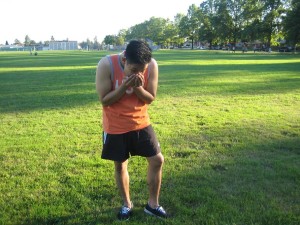Hay fever or allergic rhinitis is a condition that is instigated by an allergy to certain types of allergens present in the air such as pollen, dust, mold or pet dander. It is estimated that millions of individuals in all corners of the globe are affected by hay fever. The signs and symptoms tend to develop frequently during the spring or fall season but can occur at any time throughout the year. If a family member is diagnosed with allergies, it is best to enroll in a course on first aid today so that you are prepared to manage these signs and symptoms of hay fever once they occur.
Oral itching
If an individual is prone to hay fever, being exposed to the airborne allergens can aggravate the tissue that covers the mouth and throat. Take note that this annoyance can lead to the development of itchiness along the roof of the mouth or inside the throat. The oral itching caused by hay fever can lead to uneasiness and can even momentarily affect the sense of taste of the individual.

Nasal congestion and irritation
The nasal passages can become irritated or inflamed upon exposure to airborne allergens. Once this occurs, the individual will notice that his/her nose turns red in color or becomes itchy. The irritation inside the nose can instigate the immune system to generate mucus inside the nasal passages, thus making it hard for the allergens to enter the lungs.
Large amounts of mucus can lead to a stuffy or runny nose which makes it difficult for the individual to breathe via the nose. The individual can also suffer from frequent episodes of sneezing and the need to blow the nose often to eliminate excess mucus that might be present in the nasal passages.
Eye irritation
Once a floating allergen gains access to the eyes, the individual can suffer from eye irritation which is another symptom of hay fever. In most cases, the eyes can become watery and appear red in color or bloodshot. The individual can also develop dark, puffy circles beneath the eyes due to exposure to the allergen which is called as allergic shiners.
Coughing
The moment the airborne allergen goes into the airways, it can cause the inflammation of the tissues that lines the respiratory tract. The irritation in the throat due to hay fever can lead to coughing. Persistent coughing can eventually lead to other symptoms such as mild chest pain or a sore throat.
Headache
The nasal congestion due to hay fever can contribute to the accumulation of pressure inside the sinus passages. Once this occurs, the individual can suffer from facial pain or headaches as symptoms of hay fever. The headache can be mild or severe and usually develops in the front part of the head.
